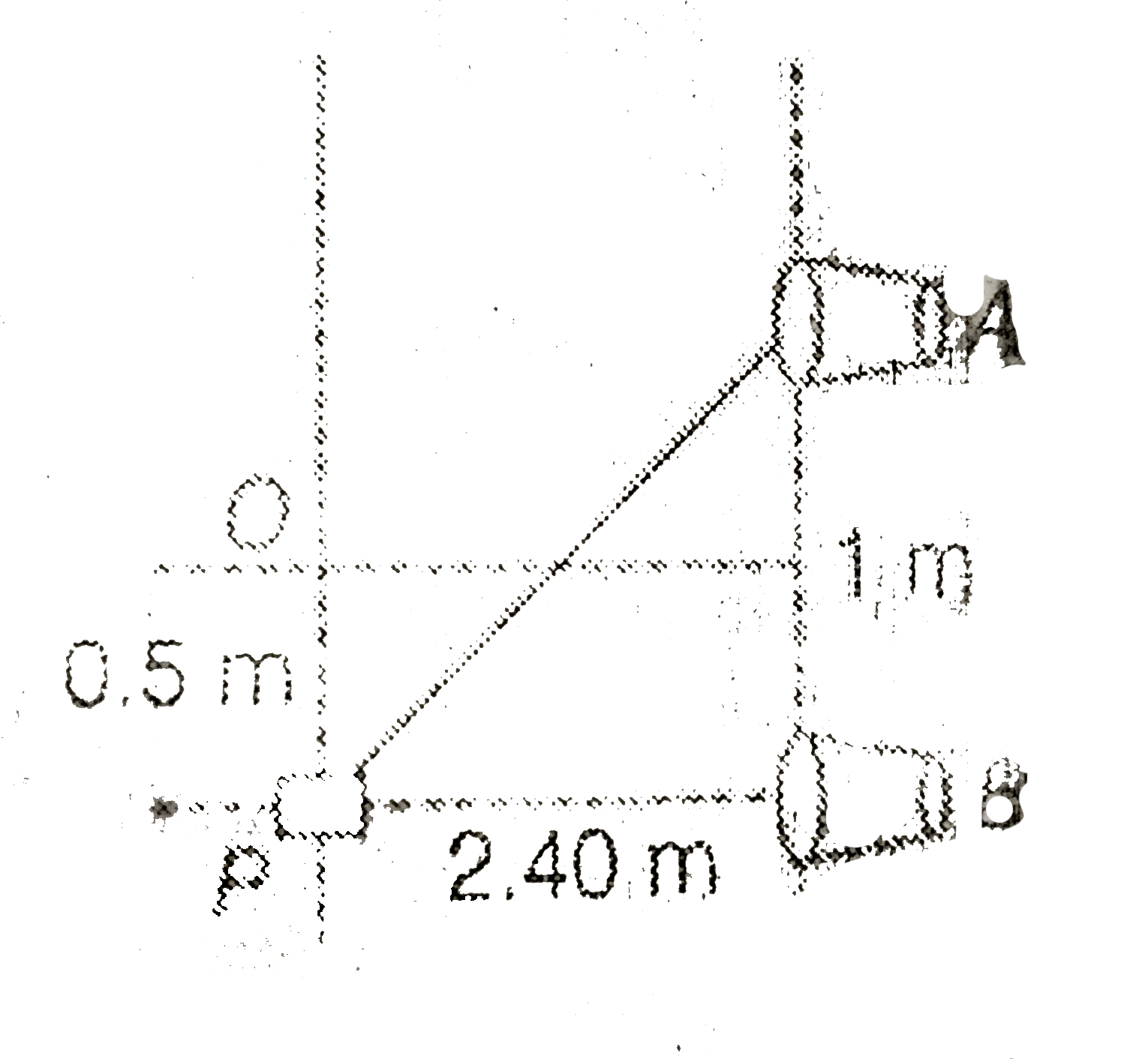two speakers A and B , placed 1 m apart, each produces sound waves of frequnecy 1800 Hz. In phase. A detector moving parallel to line of speakers distant 2.4 m away detects a maximum intensity at O nd then at P. speed of sound wave is

330ms−1
360ms−1
350ms−1
340ms−1
The correct Answer is:B
Step by step video, text & image solution for two speakers A and B , placed 1 m apart, each produces sound waves of frequnecy 1800 Hz. In phase. A detector moving parallel to line of speakers distant 2.4 m away detects a maximum intensity at O nd then at P. speed of sound wave is by Physics experts to help you in doubts & scoring excellent marks in Class 11 exams.
Topper's Solved these Questions
- BOOK - DC PANDEYCHAPTER - WAVE MOTIONEXERCISE - More Than One Option is Correct23videos
WAVE MOTION
- BOOK - DC PANDEYCHAPTER - WAVE MOTIONEXERCISE - Comprehion Type Questions19videos
WAVE MOTION
- BOOK - DC PANDEYCHAPTER - WAVE MOTIONEXERCISE - JEE MAINS50videos
WAVE MOTION
- BOOK - DC PANDEYCHAPTER - VECTORSEXERCISE - Medical enrances gallery9videos
VECTORS
- BOOK - DC PANDEYCHAPTER - WORK, ENERGY & POWEREXERCISE - Level 2 Comprehension Based2videos
WORK, ENERGY & POWER
Similar Questions
Two small loudspeakers A,B ( 1m apart) are connected to the same oscillator so that both emit sound waves of frequency 1700Hz in phase . A sensitive detector , detects a maximum wave at P on the perpendicular bisector MPofAB and another maximum wave when it first reaches a point Q directly opposite to B. Calculate the speed c of the sound waves in air .
 View Solution
View SolutionA sound wave of frequency 280 Hz has an intensity of 1.00W/m2 ? What is the amplitude of the air oscillations caused by this wave?
View Solution
Knowledge Check
- Question 1 - Select One
Two speakers A and B, placed 1m apart, each produce sound waves of frequency 1800Hz in phase. A detector moving parallel to line of speakers distant 2.4m away detects a maximum intensity at ɵ and then at P. Speed of sound wave is
 A330ms−1B360ms−1C350ms−1D340ms−1
A330ms−1B360ms−1C350ms−1D340ms−1 - Question 2 - Select One
Towards a stationary object, a train is moving with a speed of 300 m/s and emits a sound wave of frequency 2000 Hz. Small percentage of the sound is reflected back to train in the form of echo. The frequency of the echo as detected by a person sitting in the train will be (speed of sound is 340 m/s).
A31000 HzB35000 HzC32000 HzD45000 Hz - Question 3 - Select One
A vertical tube is made to stand in water so that the water level can be adjusted. Sound wave of frequency 320Hz are sent into the top of the tube. If standing waves are produced at two successive water levels of 20cm and 73cm, what is the speed of sound waves in the air in the tube (in m/s)
A339B332C334D336
A sound wave has a frequency 1000 Hz and speed 330ms−1. How long will it take to move through 1 km?
View SolutionTwo speakers S1 and S2 are a driven by same source. You walk along a line l that is perpendicular bisector of the line joining the two speakers and record the intensity at different points. Then you walk along a line m that is parallel to the line joining the speakers and record the intensity of sound at various points. On which path you observe the loudness to alternate between faint and loud? Explain.
 View Solution
View SolutionTwo sources of sound, S1andS2 , emitting waves of equal wavelength 20.0 cm, are placed with a separation of 20.0 cm between them. A detector can be moved on a line parallel to S_1S_2 and at a distance of 20.0 cm from P it. Initially, the detector is equidistant from the two sources. Assuming that the waves emitted by the sources are in phase, find the minimum distance through wffich the detector should be shifted to detect a minimum of sound.
View SolutionA person can hear sound waves in the frequency range 20 Hz to 20 kHz. Find the minimum and the maximum wavelengths of sound that is audible to the person. The speed of sound is 360ms−1.
View SolutionTwo source of sound S1 and S2 produce sound waves of same frequency 660 Hz. A listener is moving from source S1 towards S2 with a constant speed um/s and he hears 10 beat/s. Then, u is equal to ________ (in m/s).
View Solution

